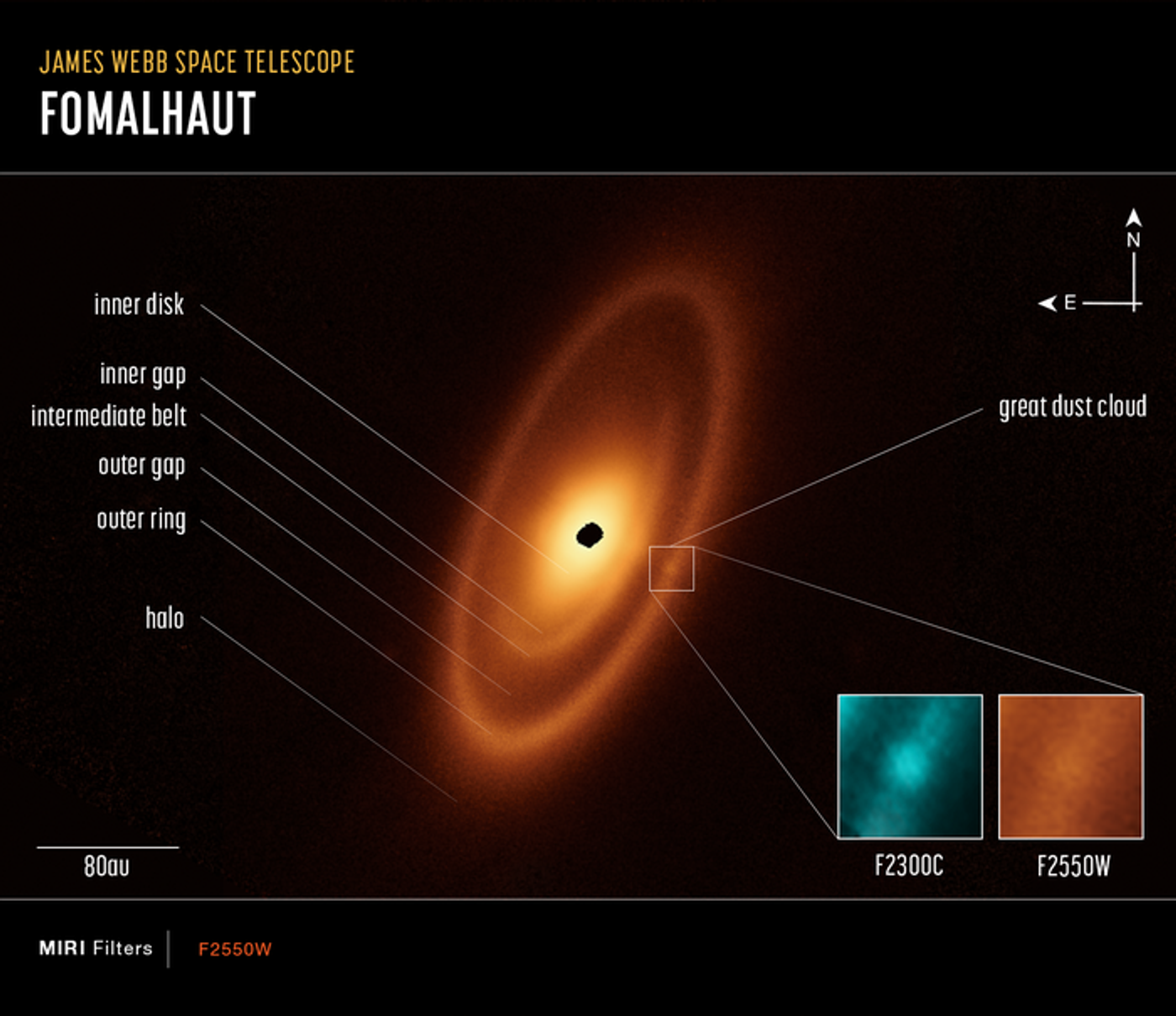NASA's Webb Observes Dusty Debris Disk Encircling Star Fomalhaut
NASA’s James Webb Space Telescope recently used its Mid-Infrared Instrument (MIRI) to observe a disk of dusty debris encircling the young star, Fomalhaut, which is located approximately 25 light-years from Earth. Initially, astronomers were attempting to observe Fomalhaut’s asteroid belt and were met with surprise when the image revealed something much more intricate than they expected. The results of these findings were published in Nature Astronomy.
Credit: NASA, ESA, CSA, A. Gáspár (University of Arizona). Image processing: A. Pagan (STScI)
Instead of imaging one belt, the astronomers observed three belts encircling Fomalhaut as far out as 14 billion miles (23 billion kilometers) from the young star. To put in scale with our own solar system, the outermost belt in the Fomalhaut system is approximately twice the distance of the Kuiper Belt in our own solar system.
Systems like Fomalhaut are often called “debris disks” since the dusty debris belts are the results impacts and collisions of larger bodies smashing into each other, which is what was happening in the early formation of our solar system.
“I would describe Fomalhaut as the archetype of debris disks found elsewhere in our galaxy, because it has components similar to those we have in our own planetary system,” said Dr. András Gáspár, who is an assistant research professor at the University of Arizona, and lead author of the study. “By looking at the patterns in these rings, we can actually start to make a little sketch of what a planetary system ought to look like – If we could actually take a deep enough picture to see the suspected planets.”
While this marks the first observation of Fomalhaut’s outermost debris disk in infrared light, previous images have been taken by NASA’s Hubble Space Telescope, the Atacama Large Millimeter/submillimeter Array (ALMA), and the Herschel Space Observatory, but were unable to observe the innermost belts that were seen in this most recent study.
The most likely cause of these three dust belts are the gravitational forces from unobserved planets within the system, much like how Jupiter barreled its way to create our asteroid belt and Neptune helped create the inner portion of the Kuiper Belt.
“The belts around Fomalhaut are kind of a mystery novel: Where are the planets?” said Dr. George Rieke, who is a Regents Professor of Astronomy and Planetary Sciences at the University of Arizona, science lead for Webb’s MIRI, and a co-author on the study. “I think it's not a very big leap to say there's probably a really interesting planetary system around the star.”
How many planets are in the Fomalhaut system, and could they be responsible for the dusty debris within this young star’s disk? Only time will tell, and this is why we science!
Sources: Nature Astronomy, NASA
As always, keep doing science & keep looking up!









